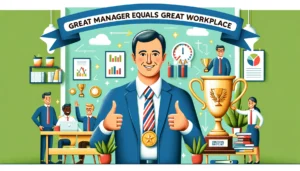Getting to the Heart of Diversity, Inclusion, and Equity
- 4 Min Read
What really matters to the C-Suite, and how can People Leaders make Diversity and Inclusion a total-organisation priority? Janine Truitt gets to the heart of D&I’s position in business.
- Author: Janine Nicole Dennis
- Date published: Oct 14, 2019
- Categories

By Janine Truitt, Chief Innovation Officer, Talent Think Innovations and HRD Thought Leader.
The concerns C-Suite leaders and boards have change minimally from year-to-year. You can expect retention to be among the list of concerns and an under-skilled workforce as another depending on who you speak to. While there is some established predictability regarding C-Suite workforce concerns, there are some notable shifts we should digest if we are to be successful facilitators of progress in business over the course of the next decade or two.
From an internal and external concern perspective, the Conference Board has reported early this year that the biggest external concern for CEO’s is a recession. As for their biggest internal concerns, you might have guessed it; it is “attracting and retaining talent”. As I mentioned earlier, these stats are predictable. This brings us to the conundrum of diversity, inclusion, and equity.
If we are saying that attracting and retaining quality talent is an ongoing business challenge that has a direct impact on the business’s ability to operate efficiently, innovate, and most importantly for many CEO’s generate revenue, how is it that employing diversity, inclusion, and equity remains an elusive effort for most organizations? If we are uneasy about not having enough people to do the work, how have we so easily cast aside specific demographics of the workforce? Here in the U.S., we acknowledge October as National Disability Employment Awareness Month. As such, it is worth noting that the differently-abled population continues to be not just unemployed ( with an unemployment rate of 8% according to Bureau of Labor Statistics), but underemployed meaning they are working less than full-time or in inadequate jobs given their level of education, training, and more importantly they are left ill-equipped to sustain a reasonable standard of living for an adult. Disability is often feared and seen with a lens of lack. The reality is we are all abled and disabled simultaneously requiring each of us to explore different ways of understanding and interacting with the world around us.
Understanding this premise, it calls into question why we have come to a place in business at all where we have effectively ostracized and alienated viable humans from the workforce on the basis of the perceived challenges of having to hire them. Moreover, we’ve concocted this silly notion that we need a “business” reason to hire certain groups of people to justify the additional efforts, intention, and dollars required to seek and retain diverse individuals.
The necessity to have an ever-evolving business that is facilitated by humans steeped in creativity, innovation, critical thinking and decision-making does not get to such a place without a variety of perspectives around the table.
Let’s examine a few reasons why diversity, inclusion, and equity should be a business imperative for you right now:
- Sometimes more ideas are just more ideas. Yet, other times, a variety of perspectives and ideas lead to increased levels of innovation that can be drivers for better product development and service offerings.
- Diverse teams who are empowered to show up authentically and are psychologically-safe to share their ideas and thoughts at work not only outperform less diverse teams; but can feel a greater sense of connectivity to their peers and belonging.
- According to Mckinsey and Company, gender-diverse companies 15% more likely to experience higher financial returns. Each gender has distinct and non-distinct characteristics and ways of seeing a problem that can assist businesses at arriving at solutions in more efficient and creative ways.
- After you get through tying a human’s worth back to dollars, you should come to the realization that the only business case that should matter is that hiring diverse people, ensuring that they are properly assimilated into the workforce , and treated equitably is the right thing to do. Doing the right thing should be a business case standalone in 2020 and beyond.
We are firmly in a time where people are increasingly choosing companies who see diversity as an opportunity rather than charity work or a business burden to be justified. It’s no longer a matter of you offering opportunities as an employer. You, too, must be seen as an employer of choice that people want to bring their talents to. This is a remarkable difference from where we started at the top of 2000.
Making a case for diversity, inclusion, and equity can be difficult as there are many ways of seeing the issues that surround these concepts. In the 2020’s and beyond, how you choose to approach each of these things has the potential to positively or negatively impact everything from your consumer base to your revenue. Now is a great time to kickstart discussions on how you can ensure you have the right composition of people on your team.









